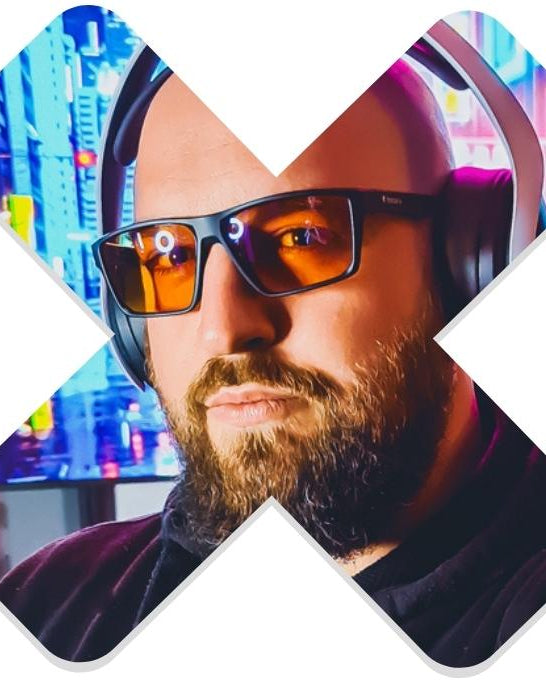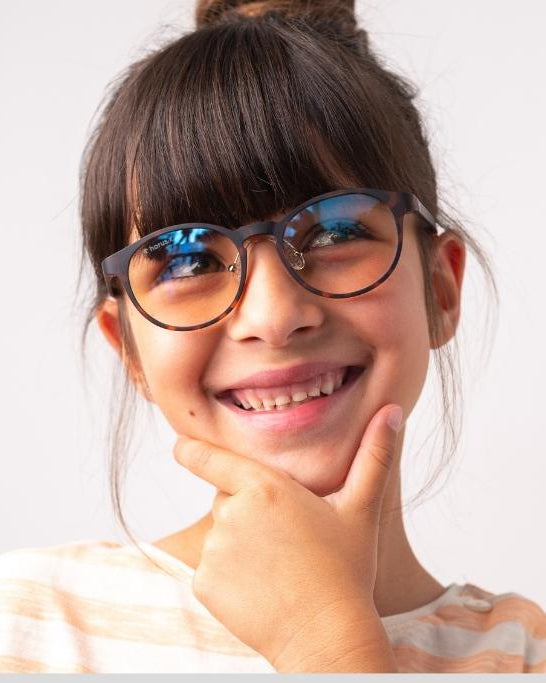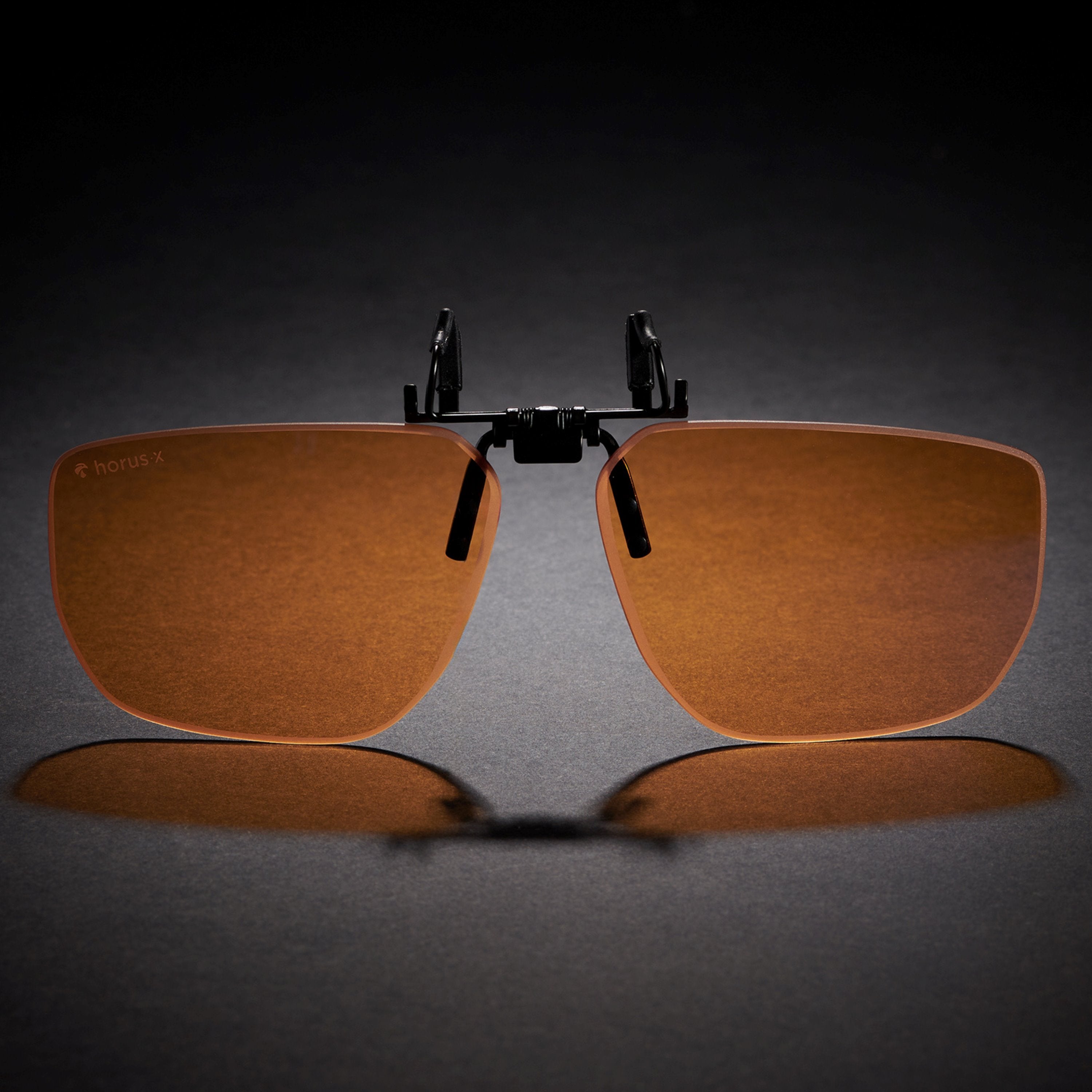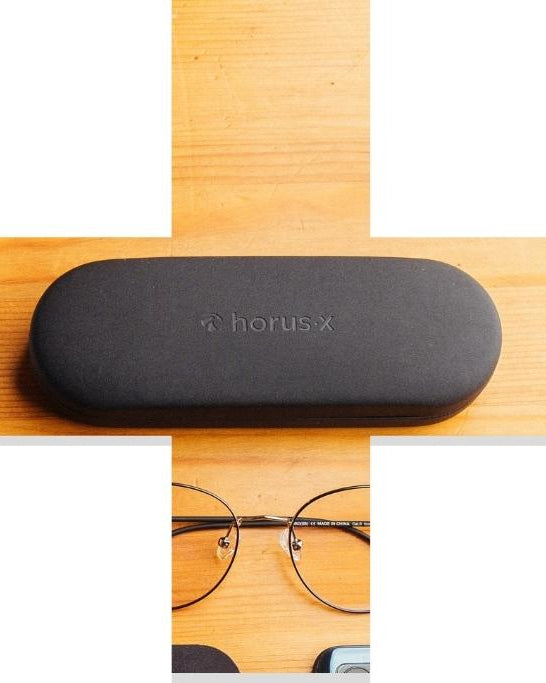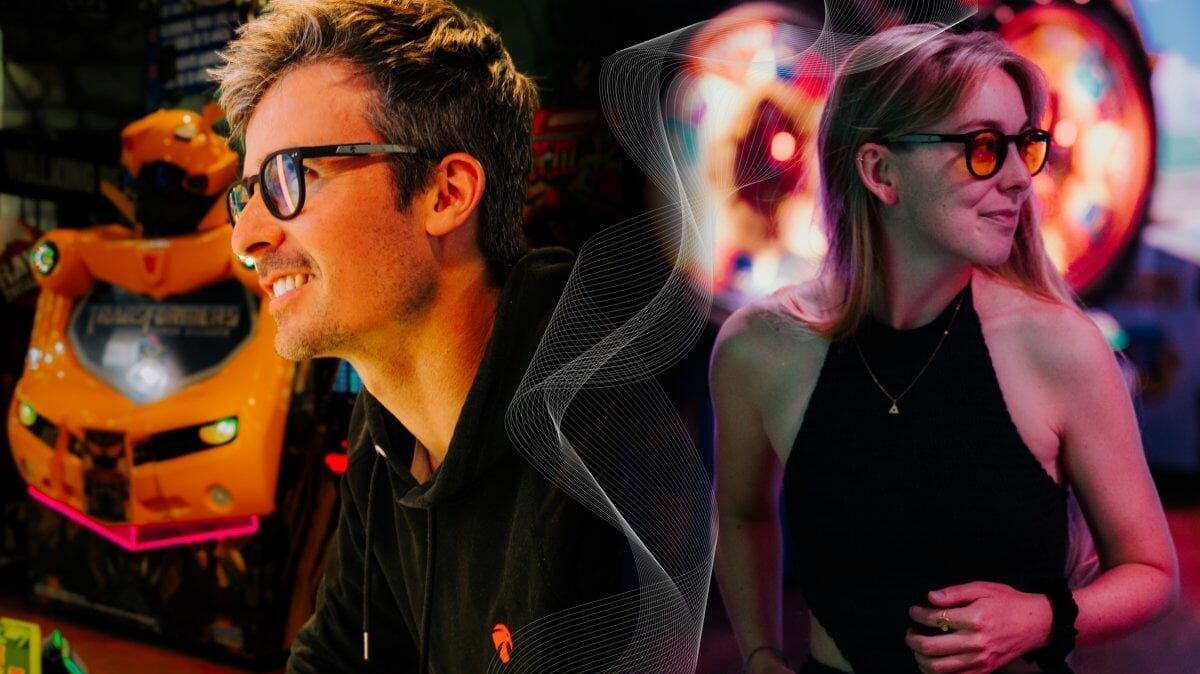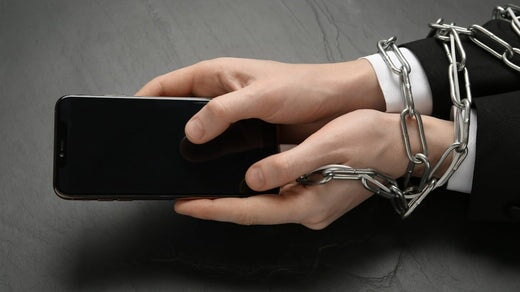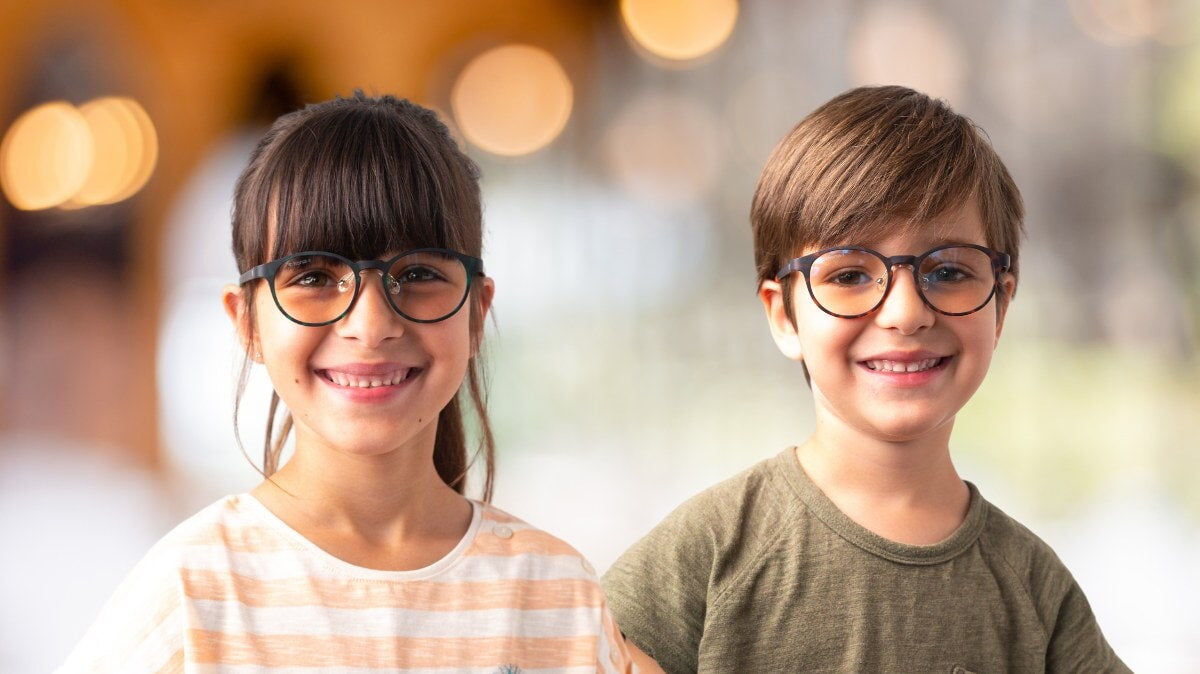If you were born before 2000, you probably had a very different childhood to the kids of today. Those of us back then in the stone age of technology didn’t have the internet at the touch of a button and our first experience with screens was most likely the NES’ The Legend of Zelda.
Not to sound like your grandmother, but kids nowadays are exposed to technology and therefore screens a lot earlier in life. That means they’re also introduced to the dangers of blue light from these devices earlier, without knowing the proper risks and how to mitigate them.
It’s up to us! The sort-of adults to learn and prevent our kids from being overexposed to blue light. So instead of fighting the monsters hiding under the bed, let’s focus on the monsters lurking in your screens; once and for all answering the question “does my child need anti blue light glasses”?

The dangers of blue light on our eyes
Light is as essential to our lives as Ratchet is to Clank. Blue light is part of that spectrum and isn’t always bad; in fact, it’s necessary for a good sleeping pattern. However, overexposure to it is harmful, which is why it’s necessary to understand the potential dangers associated with blue light.
The light spectrum can be divided into two parts like a hole in Portal. The visible light spectrum, which is good for our eyes, and the invisible UV light spectrum which can damage our pupils.
The blue light sits right in the middle of these two parts of the spectrum. Like someone who can’t decide between Star Wars and Star Trek (hint: they’re TOTALLY different).
- On the bright side: Blue-turquoise light regulates our sleeping pattern, also known as circadian rhythm. It does this by telling your body when to produce the sleep hormone, melatonin. Blue light has other advantages too, helping regulate other hormones and psychomotor properties, helping improve memory and pupillary reflex functions as well as even improving our moods!
- On the dark side: Blue-violet light is far more dangerous. While it occurs in natural light from the sun, we are also exposed to it via LED screens, like smartphones, tablets and computers, as well as if using fluorescent lightbulbs. This is the harmful side of blue light we want to be careful of.
Repeated, significant and prolonged exposure to blue light can impact our entire ocular system. The effects can be both short and long-term as it can cause:
- Acceleration or worsening of age-related macular degeneration (AMD).
- Disturbances of many body functions (as mentioned above)
- Chronic visual fatigue (headaches, blurred vision, dry eyes, tingling)
Does my kid need blue light glasses protection?
According to a 2022 study by Stanford Medicine, the average age for a child to receive their first cellphone is at just 11.6 years of age. By that age they’ve also already been exposed to artificial blue light via the LED backlighting in our TV screens, computers, and tablets. Not to mention the hours spent playing games like Minecraft or Animal Crossing.
Essentially, cellphones just exacerbate the existing blue light exposure situation.

Why is this even more dangerous for children?
Before a child hits adolescence their eyes, like the rest of them, is still forming. A child’s lens is still very fragile and filters a lot less harmful light than a fully formed and functioning adult retina. This means it lets too much harmful blue-violet through.
Faced with greater exposure to this harmful blue light, children and teenagers, both of whose sensitivity is greater, need to protect themselves from the effects of screens.
Getting adequate blue light protection from a young age will help avoid issues and illnesses associated with overexposure to blue light, such as:
- In the short term: avoid digital eye strain (also known as computer vision syndrome), headaches, dry eye, and eye fatigue.
- In the long term: avoid the risks of myopia or AMD, which are caused by aggressive overexposure to blue light.
The only blue you want your kids to be exposed to is the bright blue of Sonic the Hedgehog!
Getting good quality sleep is important to everyone, but even moreso for children. Intensive exposure to bright blue light disrupts the biological sleep cycle. This can have an even greater impact on children and can lead to responses such as poor concentration, difficulty with memory, bad moods, irritability, and stress.
How do I protect my child from blue light? Horus X’s solutions
Before jumping into the arena on Apex, you equip yourself with the best armor and weapons to defend yourself from the enemy attack. We should do the same in real life. Make sure you have the right gear to face the enemy head on and protect yourself well from them.
To protect our kids’ pupils from the dangers of blue light, there are several steps that should be taken.
Limit their screen time
No matter how much they’re crying that they just need to do one more Fortnite battle. Of course, you can always ask them nicely to be mindful of how much time spent staring at digital devices… but let’s be honest, that’s not exactly an easy negotiation.
You’ll need to use all your diplomacy, tricks, bribes and promises to get them to put the tablet down, but it’s worth it in the end.
If your teenager immediately turns into the Incredible Hulk at the mere suggestion however, there are other things you can try…

Use screens without blue light
Blue light really is everywhere, but so are filters! And we don’t mean the ones on Tik Tok. Blue light filters can be purchased and overlaid on digital screens to help limit overexposure. They will prevent the light at its source, effectively protecting your child’s – and your – eyes.
There are several types of filters you can use, purchasable ones like mentioned above, or on many devices, you can actually use in-built features or download apps that remove blue light from your screens.
Wear blue light blocking glasses
If your child or teenager wants to continue to play their games without nagging, then tell them all they have to do is put on a pair of blue light glasses. With blue light blocking glasses designed specifically for children, they can play uninterrupted by you.
It’ll also help you avoid all kinds of clashes, Street Fighter style, between you and your little angel.
Create a minimum distance from screens
By instructing your child that they must sit a certain distance from screens, you are helping them prevent long-term eye health issues.
The American Association for Pediatric Ophthalmology and Strabismus recommends keeping screens at least 25 inches from a child’s face (approximately an arm’s length away). This distance is both safe and comfortable, ensuring eyes are well protected.
And it won’t stop your little one from kicking your butt on Mario Kart.
Does my kid need blue light glasses? Final thoughts
Our children’s eyes are much more fragile than we think. That means they need even more top tier protection from a young age to avoid future negative impact on their eyes.
With the world becoming more and more screen-based, it’s our responsibility as caregivers to give them the correct tools to survive the onslaught of blue light exposure.
If they’re still not convinced, just tell them all the best characters wear glasses to protect themselves from blue light: just like Harry Potter, Dora the Explorer and Albert Wesker (although you definitely don’t’ want them emulating that last one…!)

